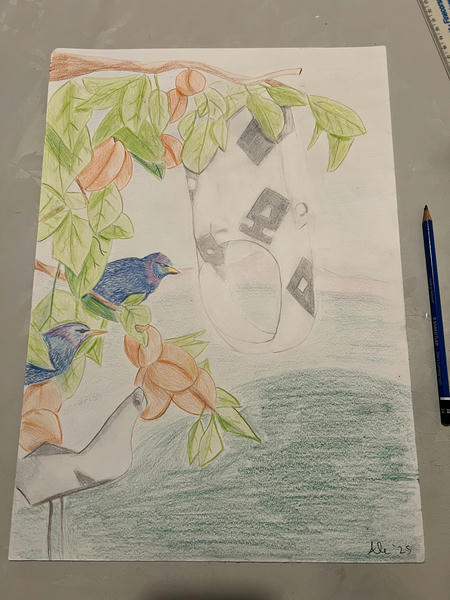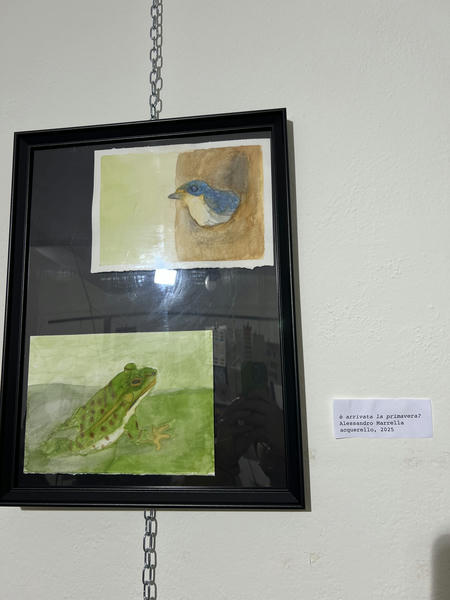Welcome to my digital garden!
I'm Alessandro Marrella, I'm a software engineer and a beginner artist.You can email me at hello @ this domain or chat with me in the socials linked below
Welcome to my digital garden!
I'm Alessandro Marrella, I'm a software engineer and a beginner artist.As part of a drawing class I'm taking, I had to create a composition between a 2d drawing and a still life drawn in class. I've used graphite for the still life and colored pencil for the 2d. Here is the result. A bit scary :D

Went to GDG Pisa DevFest today, favorite talks:
The topics were VERY different from each other and from what I normally do (the closest one is the OTEL one), but I really enjoyed them and learned a lot today! Thanks to all the speakers and GDG Pisa for organising.
Really proud of doing a small exhibition today after taking a few watercolor classes @ Imago Pisa :)
